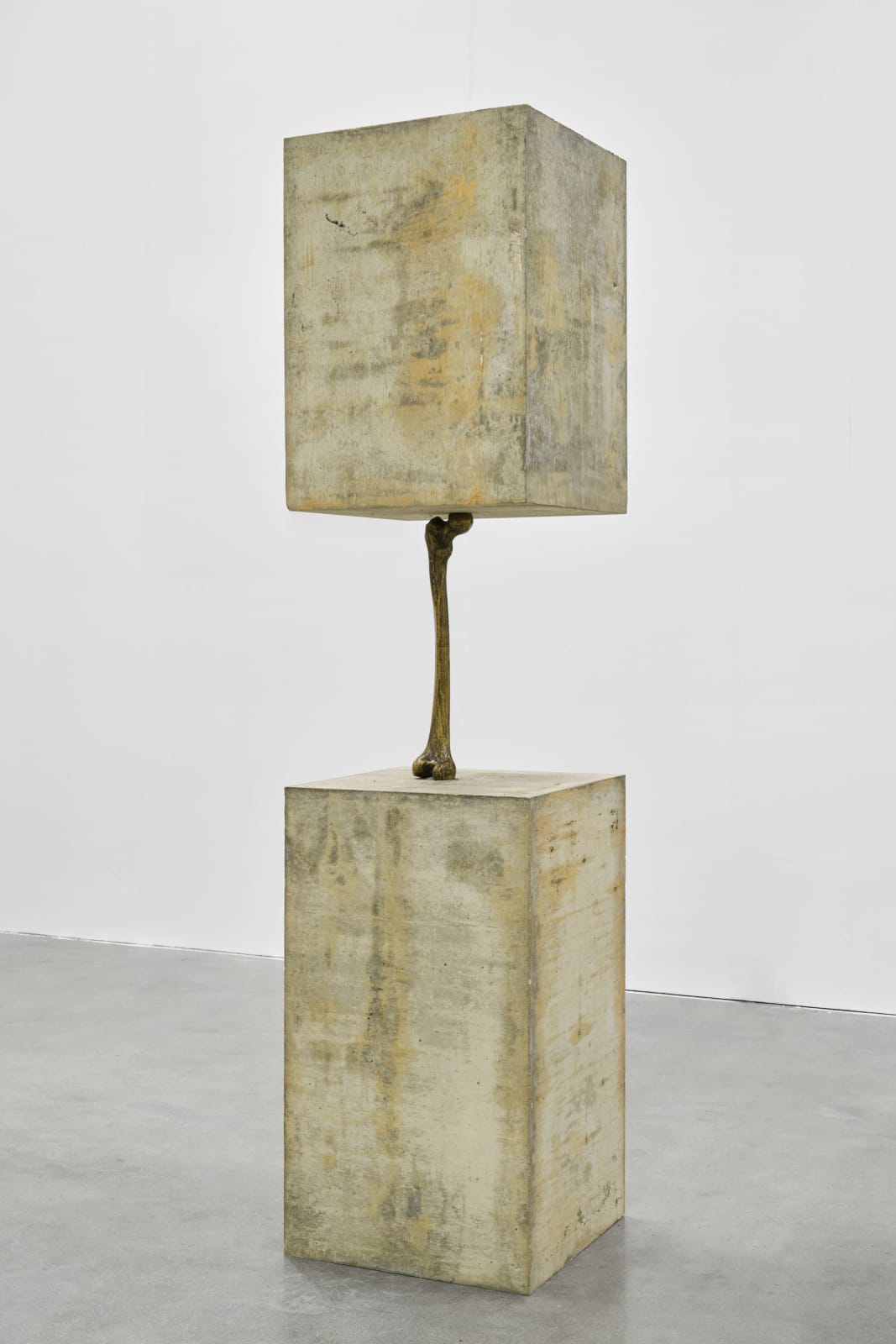


Yoan Capote Cuban, b. 1977
Autorretrato (Estudio de Resistencia), 2019
Bronze and concrete
167 x 39 x 39 cm. (65 3/4 x 15 3/8 x 15 3/8 in.)
Edition of 5 + 2 AP
Copyright The Artist
Further images
Yoan Capote’s Autorretrato (estudio de resistencia) (Self-Portrait (Resistance Study)) (2019) stands as a profoundly charged sculptural installation, a meditation on the precarious balance between resilience and fragility. In this work,...
Yoan Capote’s Autorretrato (estudio de resistencia) (Self-Portrait (Resistance Study)) (2019) stands as a profoundly charged sculptural installation, a meditation on the precarious balance between resilience and fragility. In this work, Capote interrogates the condition of the self as an unstable formation – one poised at the brink of collapse yet held aloft by an indomitable force of will. A human femur, cast in bronze, bears the immense burden of a monumental slab of polished concrete, an articulation of the existential strain that defines not only the individual but also the collective human condition.
Capote’s choice of material is conceptually precise: the femur, the strongest bone in the human body, is recast in bronze, a material that connotes endurance, permanence, and the weight of history. Yet its position – caught between the pressing weight of the concrete – suggests a tension between preservation and obliteration. By staging this confrontation between body and mass, Capote compels us to consider the metaphorical significance of resistance: against time, against oppression, against the very forces that seek to crush the individual spirit.
The work is, crucially, a self-portrait – not in the conventional sense of physiognomy or likeness, but in the deeper articulation of identity as an intersection of personal and historical forces. As Capote explains, the femur was cast from an archaeological specimen of unknown provenance – perhaps belonging to an enslaved African, a Spanish colonist, or an indigenous Taíno. This ambiguity fractures the stability of authorship, rendering the self not as a fixed entity but as a palimpsest of histories, a site of contested narratives. The self-portrait thus becomes an index of endurance, a meditation on ancestry and the weight – both literal and figurative – of the past upon the present.
Capote’s choice of material is conceptually precise: the femur, the strongest bone in the human body, is recast in bronze, a material that connotes endurance, permanence, and the weight of history. Yet its position – caught between the pressing weight of the concrete – suggests a tension between preservation and obliteration. By staging this confrontation between body and mass, Capote compels us to consider the metaphorical significance of resistance: against time, against oppression, against the very forces that seek to crush the individual spirit.
The work is, crucially, a self-portrait – not in the conventional sense of physiognomy or likeness, but in the deeper articulation of identity as an intersection of personal and historical forces. As Capote explains, the femur was cast from an archaeological specimen of unknown provenance – perhaps belonging to an enslaved African, a Spanish colonist, or an indigenous Taíno. This ambiguity fractures the stability of authorship, rendering the self not as a fixed entity but as a palimpsest of histories, a site of contested narratives. The self-portrait thus becomes an index of endurance, a meditation on ancestry and the weight – both literal and figurative – of the past upon the present.


